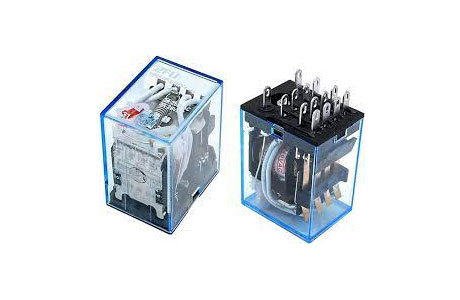Key Takeaway
An electromagnetic relay is a device that opens or closes a circuit using an electric signal. Essentially, it acts like a switch but is operated electrically rather than manually. This type of relay includes an electromagnet, which, when energized by an electrical current, generates a magnetic field. This field moves a lever to open or close the circuit. Electromagnetic relays are widely used in various applications, such as automating machinery operations or amplifying a low-power signal to control larger equipment. They help in managing multiple circuits with a single signal, making them essential in complex electrical systems.
Basic Working Principle
The basic working principle of an electromagnetic relay involves using an electromagnet to mechanically operate a switch. When an electric current passes through the coil of the relay, it generates a magnetic field. This magnetic field attracts an armature, which is connected to a movable contact. When the armature moves, it either makes or breaks a connection with a fixed contact, thereby opening or closing the circuit.
In essence, an electromagnetic relay allows a low-power signal to control a higher power circuit. This is particularly useful in applications where direct manual operation is impractical or impossible. The relay’s ability to provide isolation between the control and power circuits adds an extra layer of safety and reliability to the system.

Components and Construction
An electromagnetic relay consists of several key components: the coil, armature, contacts, and a spring.
Coil: The coil is a wire wound into a helix that generates a magnetic field when current flows through it. The strength of this field depends on the current and the number of turns in the coil.
Armature: The armature is a movable iron piece that is attracted by the magnetic field created by the coil. It is mechanically linked to the relay contacts.
Contacts: The contacts are conductive parts that open or close the circuit. There are typically two types: normally open (NO) and normally closed (NC).
Spring: The spring provides the necessary force to return the armature to its original position when the current is removed, ensuring the relay returns to its default state.
The construction of these components in a compact and robust design allows the relay to perform reliably under various conditions, making it suitable for diverse applications.
Applications and Use Cases
Electromagnetic relays are used in a wide range of applications due to their versatility and reliability.
Power System Protection: In power systems, relays are used to detect faults and initiate protective measures such as circuit breakers.
Automotive Industry: Relays control various functions in vehicles, including lighting, wipers, and heating systems.
Industrial Automation: They are integral to automation systems, controlling motors, sensors, and other equipment.
Home Appliances: Common household devices like refrigerators, air conditioners, and washing machines rely on relays for their operation.
Telecommunications: Relays are used to switch signals in telecommunication equipment, ensuring reliable communication.
The adaptability of electromagnetic relays to different voltage and current levels makes them ideal for these varied applications, providing dependable performance in each scenario.
Advantages and Disadvantages
Electromagnetic relays offer several advantages:
Isolation: They provide electrical isolation between control and power circuits, enhancing safety.
Versatility: Relays can switch AC and DC currents, making them useful in diverse applications.
Reliability: They have a long operational life when used within their rated specifications.
Cost-Effective: Compared to solid-state relays, electromagnetic relays are generally more affordable.
However, they also have some disadvantages:
Mechanical Wear: The moving parts can wear out over time, leading to maintenance issues.
Slower Response: Electromagnetic relays are slower compared to solid-state relays due to the mechanical movement.
Size and Weight: They are bulkier and heavier than their solid-state counterparts.
Understanding these pros and cons helps in selecting the right type of relay for specific applications, ensuring optimal performance and longevity.
Testing and Maintenance
Regular testing and maintenance are crucial for ensuring the reliable operation of electromagnetic relays. Testing typically involves checking the coil resistance, contact resistance, and the operation of the relay under load conditions.
Visual Inspection: Check for any signs of physical damage or wear.
Coil Resistance Test: Measure the resistance of the relay coil with a multimeter to ensure it is within the specified range.
Contact Resistance Test: Ensure that the contacts have low resistance when closed, indicating good electrical conductivity.
Operational Test: Apply a control signal to the relay and verify that it operates correctly, opening and closing the contacts as expected.
Maintenance includes cleaning the contacts to remove any oxidation or debris that could impede operation and ensuring the relay is securely mounted and connected. Regular testing and maintenance extend the life of the relay and prevent unexpected failures.
Conclusion
Electromagnetic relays are vital components in modern electrical systems, offering reliable switching capabilities across a wide range of applications. Their basic working principle, involving the use of an electromagnet to operate a switch, underpins their operation in diverse fields from automotive to industrial automation. By understanding the components, applications, advantages, and maintenance of electromagnetic relays, newly joined engineers can better appreciate their importance and effectively incorporate them into their work. This knowledge not only enhances system reliability but also contributes to safer and more efficient electrical designs.
